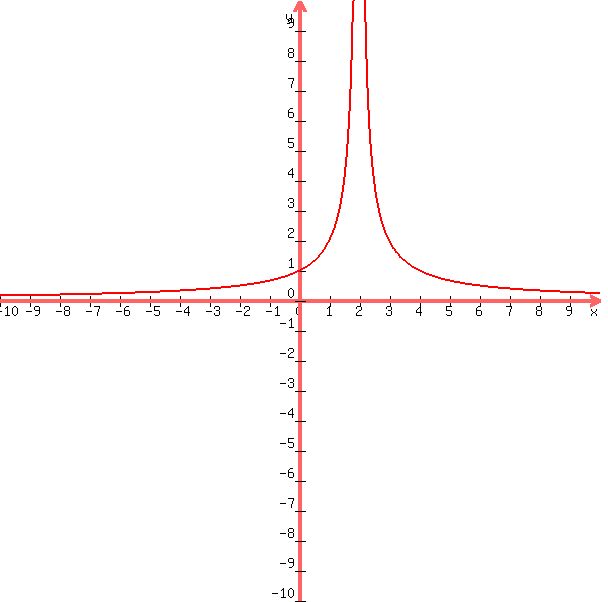Question 466780: For x < 2;
1/(|x - 2|) + 1/(|2 - x|) = ?
I got both terms multiplied by the denominator/denominator of the other term to get both of them to the same common denominator, mainly:
(|2 - x| + |x - 2|)/(|2 - x| * |x - 2|), but don't know how to proceed further. Please help
Found 2 solutions by stanbon, Theo:
Answer by stanbon(75887)   (Show Source): (Show Source):
You can put this solution on YOUR website! For x < 2;
1/(|x - 2|) + 1/(|2 - x|) = ?
I got both terms multiplied by the denominator/denominator of the other term to get both of them to the same common denominator, mainly:
(|2 - x| + |x - 2|)/(|2 - x| * |x - 2|), but don't know how to proceed further
----
If x < 2 |x-2| is always negative; so |2-x| = -(2-x) = x-2
---
If x < 2, |2-x| is always positive; so |2-x| = 2-x
----
So, if x < 2, 1/|x-2| + 1/|2-x|
--------
= 1/(x-2) + 1/(2-x)
---
= [2-x+x-2]/[(x-2)(2-x)]
---
= 0/[(x-2)(2-x)]
--
= 0
=================
Cheers,
Stan H.
Answer by Theo(13342)   (Show Source): (Show Source):
You can put this solution on YOUR website! from what i can see, the absolute value of (x-2) is equal to the absolute value of (2-x) for all values of x.
this means your denominator will be the same and your equation of:
1/(|x-2|) + 1/(|2-x|) will become (1+1)/(|x-2|) which becomes 2/(|x-2|).
if we set this equation equal to y, we get:
y = 2/(|x-2|).
i believe that's as far as you can go with this.
a graph of that equation will look like this:

you will have an asymptote at x = 2, because when x = 2, the denominator in the equation equals 0 which makes the value of y undefined.
you can see that in the graph.
i also graphed your original equation to confirm that i substituted correctly.
that equation is:
y = 1/(|x - 2|) + 1/(|2 - x|)
that graph looks like this:

the graphs are identical, so the translation of the formula must have been correct.
if you did not recognize that abs(x-2) = abs(2-x), then what you did was in the right direction.
fyi: abs(x) is another way to show |x| and is recognized by the graphing software of algebra.com.
you would simply set that equation to y and graph it as shown below:
the equation that you derived is:
y = (abs(x-2) + abs(2-x)) / (abs(x-2)*abs(2-x))
using the algebra.com formula generator, this equation will look like this:
y = 
the graph will look like this:

again, the graph is identical, so the transformation of the original equation was done correctly.
note that they indicated x < 2 which means that the graph is valid only for values of x < 2 which means all negative values of x + 0, 1, up to, but not including 2.
in interval notation, that would be shown as (-infinity, 2)
you would effectively ignore the values of x >= 2 in the graph.
|
|
|